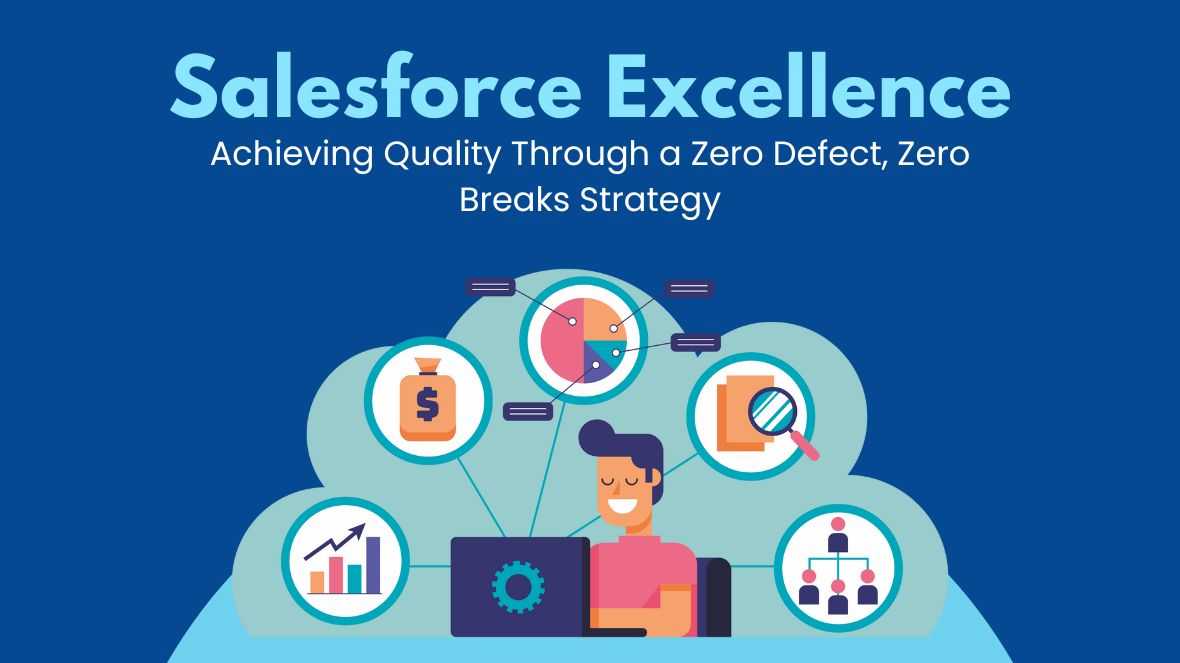Introduction
Embracing a zero-defect, zero-break strategy is paramount for upholding the exemplary standards synonymous with Salesforce products. Here’s how this approach can specifically enhance Salesforce product quality
Zero Defect Approach in Salesforce Development: This involves meticulous testing and validation of customizations, configurations, and integrations within the Salesforce ecosystem. From Apex code to declarative changes in workflows and custom objects, every component undergoes thorough testing to ensure it meets Salesforce’s best practices and doesn’t introduce any defects. This approach helps uphold data integrity, mitigate system errors, and guarantee a seamless user experience.
Zero Breaks Strategy for Salesforce Implementation: Salesforce frequently serves as the cornerstone of essential business operations, and any interruptions can yield extensive repercussions. A zero breaks strategy involves comprehensive regression testing before deploying new features, updates, or customizations to production environments. This includes testing the impact on existing processes, integrations with third-party systems, and overall system performance. Through proactive identification and mitigation of risks, organizations can reduce downtime, prevent data loss, and sustain business continuity.
Benefits of this Salesforce-specific strategy:
Enhanced User Adoption and Satisfaction: By delivering reliable and error-free Salesforce solutions, organizations can drive higher user adoption rates and improve overall satisfaction among employees, partners, and customers. Users can rely on the system to operate seamlessly, fostering heightened productivity and engagement.
Reduced Technical Debt: Addressing defects and preventing system breaks early in the development lifecycle helps reduce technical debt associated with fixing issues later. This allows development teams to focus on strategic initiatives and innovation rather than firefighting ongoing issues.
Streamlined Salesforce Release Management: A zero defect, zero breaks strategy enables smoother Salesforce release management processes. By ensuring that each release is thoroughly tested and validated, organizations can deploy updates with confidence, minimizing the risk of post-deployment issues and rollbacks.
Compliance and Security Assurance: In industries subject to rigorous regulatory demands like healthcare or finance, ensuring a stable and secure Salesforce environment is of utmost importance.. By adhering to a zero defect, zero breaks strategy, organizations can demonstrate compliance with industry standards and protect sensitive data from vulnerabilities and breaches
Conclusion:
To successfully implement this strategy, organizations should leverage Salesforce-specific testing tools and methodologies, such as Salesforce DX for development and Salesforce’s own testing suites like Apex Test Framework. Moreover, cultivating collaboration among development, testing, and operations teams is vital for ongoing enhancement and alignment with business objectives.


